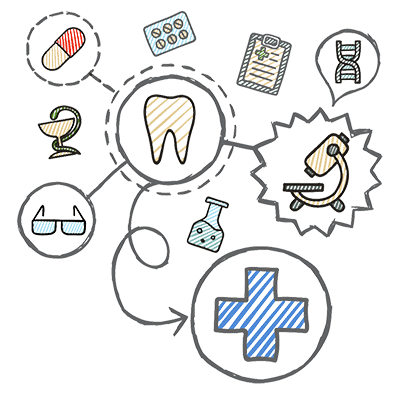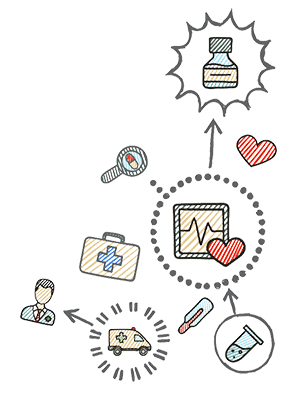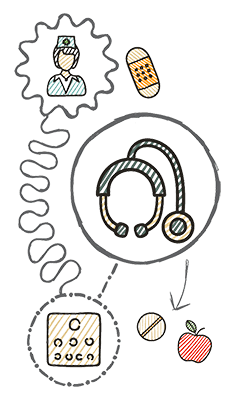Negrete said the student hotspotting experience provides a good reality check regarding what advice pharmacists can offer patients. If you have a patient who smokes, he suggested, but that person is homeless and unsure where he or she will sleep that night, smoking may be a coping mechanism. Focusing on getting that patient to quit smoking might not be the best starting point. “[Hotspotting teaches students to] meet the patients where they are and figure out what they are motivated and able to do,” he said. “It’s giving them a much better sense of the gritty reality.” Working on an interprofessional team gives students who aren’t in the same program the opportunity to learn to function effectively to achieve a common goal, he added. “You’re dealing with people from multiple professions. You have to acknowledge the barriers and deal with them. Most health systems aren’t readily set up to operate these programs. Students have to navigate bureaucratic challenges. That’s the reality. It’s teaching the students the importance of grit and perseverance.”
Building Relationships With Providers and Patients
For some of the hubs, hotspotting activities are woven into the curriculum. At the Jefferson College of Pharmacy at Thomas Jefferson University, P3 students who apply to participate can get independent study credits, while hotspotting is a co-curricular activity for P4 students who apply and are accepted. Dr. Amber King, associate professor, said the university is right across the river from Camden, is in close proximity to underserved populations and has a center for interprofessional education, which made it an ideal candidate to become a hub. “This is a great win-win in that it helps students, patients and potentially the health system if we find that these interventions are actually saving money and preventing people from going to the emergency room so often,” she said.
This year, two additional faculty from the college of pharmacy who work in ambulatory care clinics will be joining teams as advisers. “A physician approached each of them in their clinics and asked if they would help precept a team,” King explained. “It’s great to see providers asking for a pharmacist on the team.” She said the opportunity for students to work on these teams is unique because it has the potential to have a real impact on individual patients and the health system.
“We talk so much about the social determinants of health and how they impact someone’s ability to care for their health, but that’s really not something you can learn in the classroom,” she continued. “Working with these individuals who have so many barriers to healthcare and other things going on making it hard for them to care about their health is really eye-opening for students. Someone might not care about having hypertension at that moment because he or she is worried about where to sleep that night or how to pay the rent. It really opens students’ eyes and gives them insight and empathy. We need to respect our patients and their experiences and understand how at some points in time, those other things are more urgent than health.”
King said this interprofessional education experience helps student pharmacists see the value that they provide to the healthcare team early on in their education and careers. “It helps them advocate for the profession, and see the benefits they can provide to patients and the unique things they can bring to the table,” she said. “When you know that as a student, that just makes you a better clinician and gives you a more solid foundation to build upon.”
At the Southern Illinois University hub site, student hotspotting is an elective experience for P3 and P4 students. Somewhere between 60-80 students participate on hotspotting teams each year, with about four to eight of those being student pharmacists, according to Dr. Janice Frueh, clinical associate professor at the Southern Illinois University Edwardsville School of Pharmacy. Frueh has been collaborating with SIU’s School of Medicine since 2009, working with underserved patient populations in the area. Her colleagues at the SIU School of Medicine became aware of the hotspotting program through that work and suggested putting teams together. The program allows student pharmacists to build on their skills around patient-centered care.




